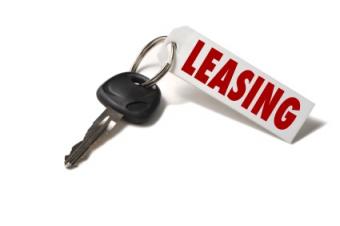
Leasing a new car is one means of obtaining private transportation. You don't own the car. Rather, you pay for the privilege of its use at a rate lower than a rental. New car leasing deals are tempting because purchasing a car outright with financing over a time period that may exceed five years could result in payments nearly twice that of your leasing fees. You generally have four options to choose from at the end of your lease: buy the leased vehicle, use it as a trade-in on a new car, return it or you can extend your lease for another specific period. Knowing whether to buy or lease a car might not be an easy decision.
Pros and Cons
Leasing can be cheaper. If you don't mind becoming entangled in a deal that locks you in for 36 months or so, then you should take an advertised deal. One main drawback is that after the leasing period is over you've got to return the car. While in possession of the car there are several restrictions about what you can or cannot do, mostly related to how many miles you can put on the car.
Leasing includes fees at the front and back ends, and higher finance charges as well. If you don't like your deal, unlike true car ownership, you can't trade-in or sell your car and buy another. You're stuck with the deal until the lease expires, or risk paying substantial penalties. It's often a better deal to buy a car and drive it until the wheels fall off, hopefully long after the loan is paid. But car financing requires good credit. Poorer credit ratings make for higher payments and higher interest rates.
Payments
Unwary consumers get stuck with bad deals simply because they can't look beyond the "low" monthly payment carrot dangling before their eyes. Leases are based on manufacturer's suggested retail price (MSRP) with extra charges for insurance, extended warranties, delivery fees, and other items added on for good measure. When you lease, you don't pay for a car's full value, only depreciation, or how much the car's value declines while you tool around town. A car can lose 50% of its value over a three-year period. What's left is its residual value. Leasing a car for residual value is ideal, resulting in lower payments.
But leasing deals are offset with mileage restrictions, limiting use to 10,000 -15,000 miles a year. Most drivers average 12,200 miles a year, so you already are backed into a corner. And isn't the purpose of having a new car is the freedom to travel where and when you want?
Other added fees include a $600 "lease acquisition fee," slapped on by the automaker or finance company that underwrites your lease. A security deposit may also be required, equal to one month's payment, usually refundable. When your lease ends and you turn in the car, get set for a $400 "lease disposal fee," excessive mileage fees of 15-30 cents a mile, and miscellaneous charges for "wear and tear," which applies to anything mechanical or cosmetic.
Hidden Fees
There are a number of hidden fees in a lease. These are usually called "money factors." To get an idea how expensive it is to lease, take the current interest rate and multiply by 2,400. Dealers will also sometimes mark up money factor fees just to make sure they make enough on the deal. For example, leasing a $30,000 car for three years results in about $3,900 in fees, about $1,000 higher than a three-year loan, even with matching interest rates of 5.7%.
Protect Yourself
Even after learning about leasing you're at a disadvantage. You simply don't spend as much time thinking about the ins and outs of a car lease as the salesman does. There are, however, some ways for you to protect yourself when entering shark-infested waters.
- Do your research. Check out leasing tips and the Federal Reserve's consumer leasing guide
- Negotiate hard. Play the game as if you were buying. Save your lease card after you've settle a price with the car salesman. Prepare for moaning.
- Make an up-front mileage purchase. Since the limitations on mileage are restricting, settle on prepaid fees rather than back-end excess mileage fees which will be more expensive.
- Read the fine print closely. Note restrictions, penalties, and end-of-lease procedures, that clauses exactly match your negotiated demands, capitalized cost, or the total negotiated price and fees, minus any trade-in value and down payment.
- Check your numbers before you sign, verify the numbers using a lease calculator you can find at BankRate.com.
Leasing Your Car
Leasing a car makes good financial sense for some people. If you are one of these people, then you will almost certainly want to lease rather than buy. Make sure that you have done your homework and prepared yourself before you go down to the lot. When you get the bill in the mail you will be glad that you did.







